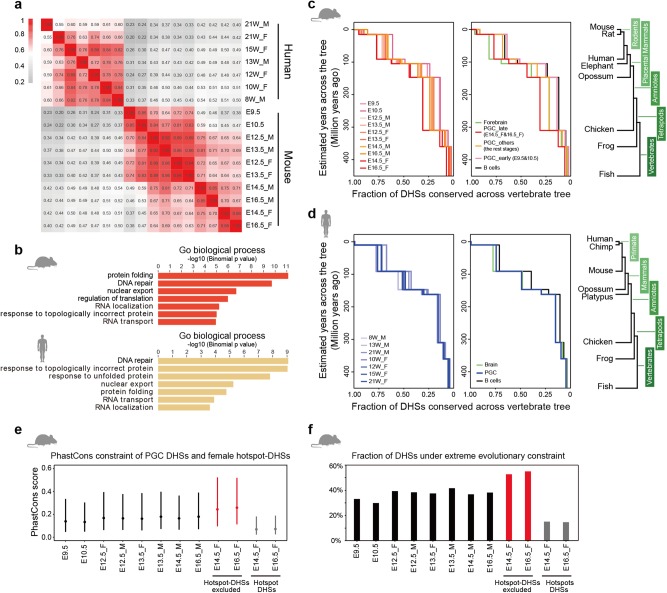Fig. 6.
Evolutionary pressures on cis-regulatory activities in mouse and human PGCs. a Spearman correlation matrix of DHS signals at orthologous sites in mouse and human PGCs. b Functional annotation of orthologous DHSs that exhibit comparable chromatin accessibility levels in mouse and human PGCs (n = 1458). c Plots showing cumulative proportion of mouse PGC DHSs conserved across the vertebrate tree (shown on far right) as defined by sequence homology. The left panel shows evolutionary differences among mouse PGC DHSs across developmental stages and between sexes. The right panel displays the average evolutionary conservation levels in mouse PGCs, forebrain and B cells. Mouse PGCs were divided into three categories based on their different evolutionary conservation levels. d Similar analysis to (c), performed in human PGCs, brain and B cells. e PhastCons constraint of mouse PGC DHSs and female hotspot-linked DHSs. For E14.5 and E16.5 female PGCs, DHSs representing recombination hotspots were excluded. f The fractions of mouse PGC DHSs that were under strong vertebrate constraint (score > 300)

